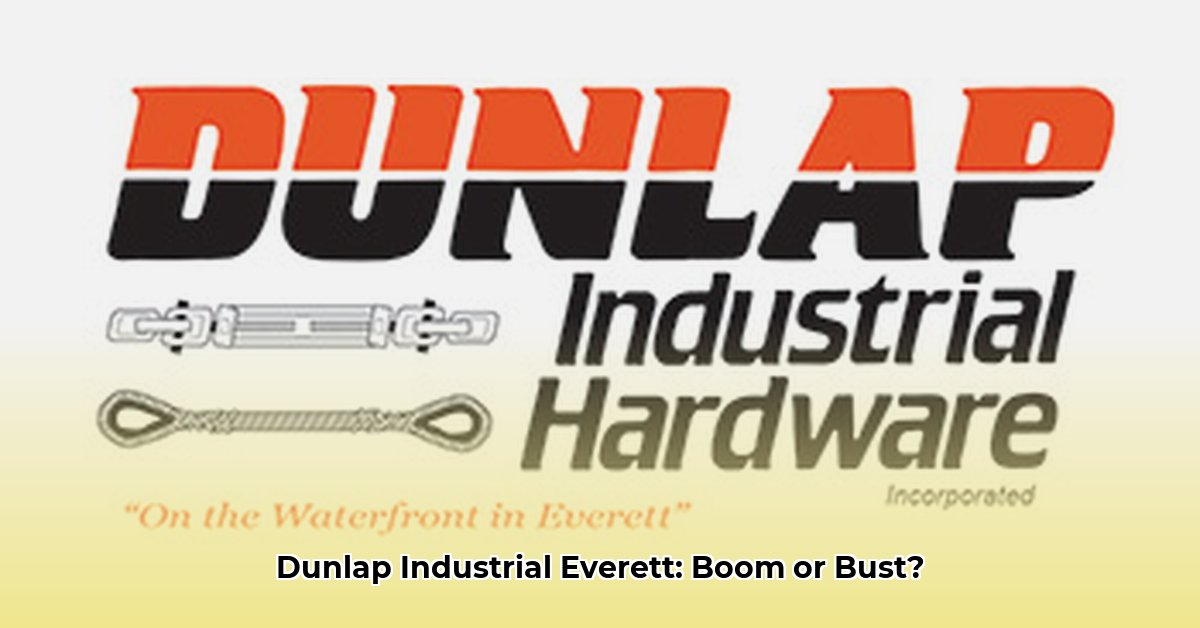
Dunlap Industrial Everett, a prominent industrial supplier in Western Washington, has established a strong regional presence over its 40-year history. This analysis examines its market position, strengths, weaknesses, and potential growth strategies, alongside a comprehensive risk assessment. The findings offer actionable intelligence for stakeholders interested in the company's future trajectory.
Market Analysis: Regional Dominance and Emerging Challenges
Dunlap enjoys significant market dominance in Western Washington, serving diverse sectors including marine, construction, logging, and trucking. This diversification mitigates risk associated with single-industry dependence, providing resilience against economic fluctuations. Its in-house manufacturing capabilities allow for rapid turnaround times and customized solutions, a key competitive differentiator. Strong partnerships with established brands such as Husqvarna and DeWalt ensure access to high-quality components and reliable supply chains.
However, the company faces challenges. Its limited online presence significantly restricts market reach and hinders brand visibility compared to digitally-native competitors. Geographic concentration in Everett, while beneficial for operational efficiency, limits expansion opportunities and increases vulnerability to regional economic downturns. The reliance on traditional sales methods, while effective historically, necessitates adaptation to the evolving digital landscape. How can Dunlap leverage existing strengths while mitigating these weaknesses?
Strengths and Weaknesses: A Balanced Perspective
Dunlap’s core strengths underpin its current success, but addressing its weaknesses is crucial for future expansion.
Strengths:
- Regional Market Leadership: Established dominance in Western Washington provides a solid foundation for future growth.
- Diverse Customer Base: Reduced vulnerability to economic downturns in any single sector.
- In-House Manufacturing: Enables customization, faster turnaround times, and potential cost advantages.
- Strong Brand Partnerships: Access to high-quality components and reliable supply chains.
Weaknesses:
- Limited Online Presence: Significant constraint limiting market reach and brand visibility.
- Geographic Concentration: Restricts expansion possibilities and increases regional economic vulnerability.
- Dependence on Traditional Sales Methods: Less efficient and less responsive to evolving market demands.
Growth Strategies: A Multifaceted Approach
Dunlap requires a strategic growth plan to capitalize on its strengths and address its weaknesses. The following strategies, categorized by timeframe, represent a roadmap for sustainable growth.
Short-Term Strategies (0-1 Year):
- E-commerce Development: Develop a user-friendly e-commerce website to expand market reach and enhance brand visibility. This should include robust search functionality and detailed product information.
- Inventory Optimization: Implement inventory management software to improve efficiency, reduce waste, and strengthen cash flow.
- Sales Team Upskilling: Provide sales staff with enhanced product knowledge and implement a CRM system to improve customer relationship management.
Long-Term Strategies (3-5 Years):
- Geographic Expansion: Explore strategic expansion beyond Everett, potentially through new locations or strategic partnerships with distributors in other regions.
- Technological Investment: Invest in modern manufacturing technologies to improve efficiency, reduce production costs, and enhance product quality.
- Talent Development: Implement a comprehensive employee training program, incorporating digital sales skills and leadership development programs.
Risk Assessment: Proactive Mitigation
Dunlap faces a range of potential risks that require proactive mitigation strategies.
| Risk Category | Likelihood | Impact | Mitigation Strategy |
|---|---|---|---|
| Increased Competition | Medium | Medium | Proactive branding, enhanced customer service, exploration of new niche markets. |
| Economic Downturn | Medium | High | Diversified customer base, optimized inventory management, flexible cost-cutting measures. |
| Supply Chain Disruptions | High | High | Multiple suppliers, alternative sourcing options for critical components. |
| Technological Disruption | High | Medium | Continuous technology upgrades, employee training on emerging technologies, and agile adaptation. |
Conclusion: Navigating the Future of Industrial Supply
Dunlap Industrial Everett's future hinges on its ability to adapt to the evolving landscape of industrial supply. By embracing digital transformation, diversifying its operations, and proactively managing risks, the company can effectively leverage its strengths and overcome its weaknesses. The timely implementation of the proposed growth strategies, coupled with ongoing adaptation, is essential for maintaining its regional leadership and achieving sustainable growth within the increasingly competitive national and international markets. Failure to adapt risks stagnation and diminished market share.